NetApp is very popular for NAS (Network Attached Storage) from the past decade . In 2002 , NetApp would like to change the NAS tag to SAN. So they have renamed their product lines to FAS (Fabric Attached SCSI) to support both NAS and SAN. In the FAS storage product lines, NetApp provides the unique storage solution which supports multiple protocols in single system. NetApp storages uses DATA ONTAP operating system which is based on Net/2 BSD Unix.
Prior to 2010, NetApp provides two type of operating systems.
- DATA ONTAB 7G (NetApp’s Legacy Operating System)
- DATA ONTAP GX. (NetApp’s Grid Based Operating System)
DATA ONTAP GX is based upon GRID technology (Distributed Storage Model) acquired from Spinnaker Networks.
NetApp 7 Mode vs Cluster Mode:
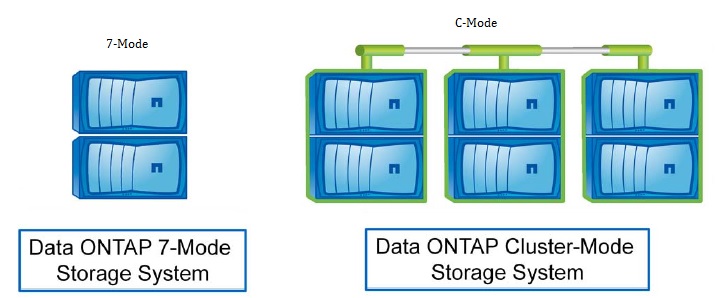
In the past, NetApp provided 7-Mode storage. 7-Mode storage provides dual-controller, cost-effective storage
systems. In 2010, NetApp Released the new Operating System called DATA ONTAP 8 which includes the 7 Mode and C Mode. We just need to choose the mode in the storage controller start-up (Similar to Dual Boot OS system). In NetApp Cluster Mode , you can easily scale out the environment on demand basis.
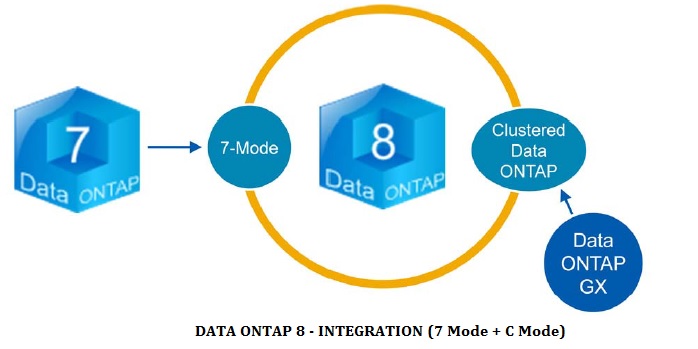
From DATA ONTAP 8.3 operating system version onwards, you do not have option to choose 7 Mode. It’s just available only as Clustered DATA ONTAP .
Clustered DATA ONTAP Highlights:
Here is the some of the key highlights of DATA ONTAP clustered mode. Some of the features are remain same as 7-Mode.
- Supported Protocols:
- FC
- NFS
- FCoE
- iSCSI
- pNFS
- CIFS
2. Easy to Scale out
3. Storage Efficiency
- It supports De-duplication
- Compression
- Thin Provisioning.
- Cloning
4. Cost and Performance
- Supports Flash Cache
- Option to use SSD Drives
- Flash Pool
- FlexCache
- SAS and SATA drive Options
5. Integrated Data protection
- Snapshot Copies
- Asynchronous Mirroring
- Disk to Disk or Disk to tape backup option.
6. Management
- Unified Management. (Manage SAN and NAS using same portal)
- Secure Multi-tenancy
- Multi-vendor Virtualization.
Clustered DATA ONTAP – Scalability:
Clustered Data ONTAP solutions can scale from 1 to 24 nodes, and are mostly managed as one large system. More
importantly, to client systems, a cluster looks like a single system. The performance of the cluster scales linearly to multiple gigabytes per second of throughput, and capacity scales to petabytes. Clusters are built for continuous operation; no single failure on a port, disk, card, or motherboard will cause data to become inaccessible in a system. Clustered scaling and load balancing are both transparent.
Clusters provide a robust feature set, including data protection features such as Snapshot copies, intracluster
asynchronous mirroring, SnapVault backups, and NDMP backups.
Clusters are a fully integrated solution. This example shows a 20-node cluster that includes 10 FAS systems with 6
disk shelves each, and 10 FAS systems with 5 disk shelves each. Each rack contains a high-availability (HA) pair with
storage failover (SFO) capabilities.
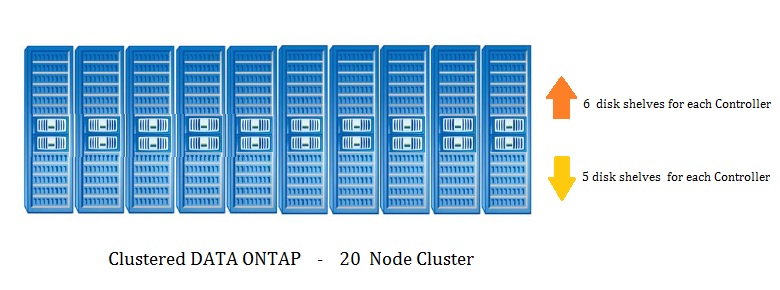
Note:When you use both NAS and SAN on same system, the supported maximum cluster nodes are Eight. The 24 node cluster is possible when you use the Netapp storage only for NAS.
Performance: (NAS)
- Using the load-sharing mirror relationship, you can improve the volume performance by 5X (6 Node cluster).
- Linearly Scale aggregate read/write performance in a single namespace.
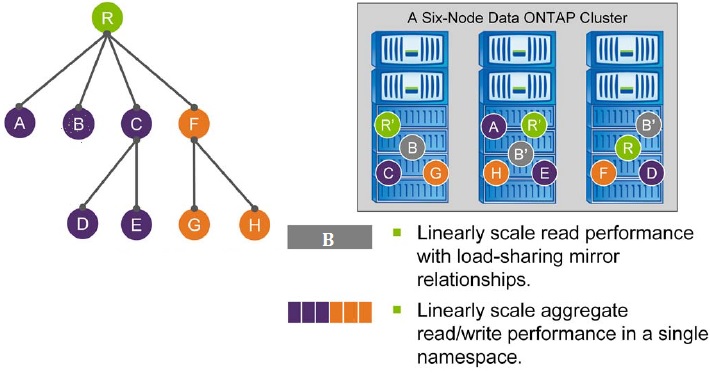
In the above diagram , volume R is the root volume of a virtual storage server and its corresponding namespace. Volumes A, B, C, and F are mounted to R through junctions.
- Here volume R and volume B has two mirror copies on different nodes to improve the read requests. Those mirror copies are just read-only to improve the read IOPS.
- Other volumes A, C, D, E, F, G are distributed across multiple nodes to improve the read/write performance. But all the volumes are belongs to single name space (R)
Capacity :
In Clustered DATA ONTAP , you can increase the capacity by adding additional storage controllers and disk shelves.
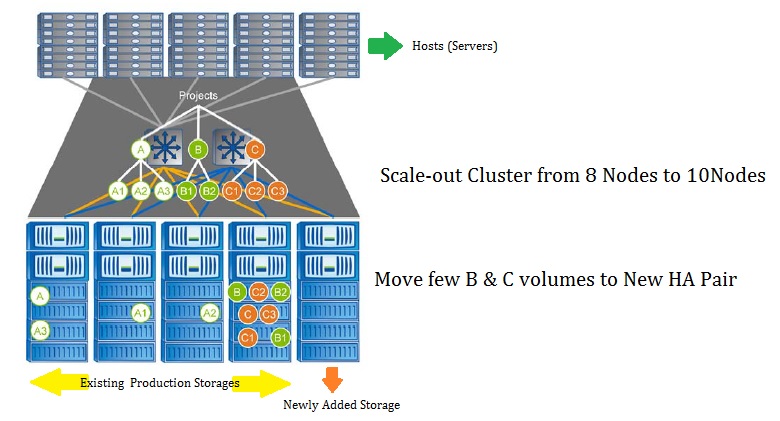
In the above scenario, all the existing storage space has been consumed or committed. You got new request to add to increase the volume B. You need to follow the steps to scale the capacity.
- Add two nodes to make a 10 cluster from 8 node cluster.
- Move B volume to the new HA pair storage.
- Expand the B volume.
- This movement and expansion is transparent to client machines.No changes required on hosts.
In the upcoming articles , we will see the different terms and objects on NetApp Clustered DATA ONTAP.
Hope this article is informative to you. Share it ! Comment it !! Be Sociable !!!
Leave a Reply